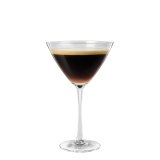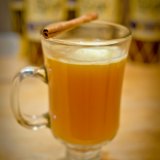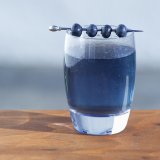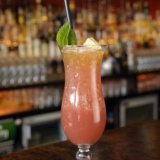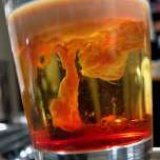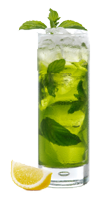I was recently immersed in the story of Grey Goose Vodka. A key part of the story is the “creation” of the vodka, itself. I am sure you are thinking, “creating vodka is simple, why tell us about it?” Admittedly, that was my initial reaction. What could Grey Goose possibly show me but a huge industrial distillery and some slick marketing.
I was wrong!
What I discovered standing in the wheat fields of Picardy, France and the vineyards of cognac was that not all vodkas are made of marketing dollars. Back in the mid-1990s Sidney Frank set out to create a super premium vodka that didn’t need a celebrity spokesperson to succeed.
Frank decided to create a vodka with the same care and attention that had been given cognac for centuries. He set out to France in search of Master du Chai for his vodka. A Master du Chai is a master taster that is responsible for blending the brandies that make up a particular cognac.
Why is this process different than other spirits? In most cases, there is both a distiller and a blender. A Master du Chai in Cognac is both, overseeing both the distilling and blending processes with careful attention. There is no Master du Chai school. Even today, there is only way to gain the coveted position of Master du Chai and that is through years of apprenticeship with another Master du Chai.
Mr. Frank found his man in Francios Thiabadeux, Master du Chai of a small Cognacery. He agreed to the challenge of creating a vodka worthy of cognac and in 1997 Grey Goose was born.
After arriving in Paris, we immediately headed north to the wheat fields of Picardy. OK, we did have lunch first, it is France after all. It was here, looking over the rolling hills of Picardy, that I realized this voyage through the creation of Grey Goose would literally start at the beginning – in the wheat fields.
It was here that we met Marc, who farms 900 acres producing the artisanal wheat that forms the base of Grey Goose. He is the 11th generation of his family to farm this land. Marc is part of a cooperative that supplies high quality wheat to Grey Goose.
I also learned a few things about French wheat production. France is the 5th largest wheat producer is the world and Picardy wheat is the best in France. Why? The terroir, Picardy’s climate and soil. The limestone, clay and sand soil trap water and nourish the wheat until harvest in August.
From the fields, Marc invited us all to his beautiful house in Tipgny, where he processes and stores much of the harvested grain prior to shipping to off to the distillery. Refreshments were served, it is France!
story continues after the sideshow
[portfolio_slideshow]
The next morning we headed off to the distillery, which is located as close as possible to the wheat fields to ensure the utmost freshness. I’ve seen a lot of distilleries, but this was the first one I had seen on the open air. With two 30 meter (90 feet) column stills gleaming in sun, it’s quite a site. Unlike many distilleries, this one only produces Grey Goose and does not produce any other brands. It is also the only site in the wold that produces Grey Goose.
Wheat arrives right off the field, is tested and is either accepted or rejected. Grey Goose uses whole wheat in it’s distillation process. The grain is milled into flour on premise and all waste is recycled (usually goes to feed livestock). Before milling, the wheat has a brief stay in its silo for 24 hours to increase it’s humidity. After the 4 step milling process the resting flour is mixed with hot water, which begins the process of converting starch to sugar which lets the yeast create alcohol. A specially formulated yeast is added to the first tank and the process of fermentation begins. The fermentation process is done over a series of 6 tanks and takes about 30 hours. Upon leaving tank 6, the yeast has completely eaten all of the sugar such that the sugar content of the distillers wine (that’s what they call it) is zero.
The distillers wine leaves the fermentation tanks and heads for the stills where it will be turned into vodka. Distillation is a 5 step process where the distillate is fed through the 30MM column stills and then into smaller stills to separate the good alcohol from the bad (heads and tails). Finally, the last still removes any methanol from the distillate.
After distilling, the product is approximately 98% pure alcohol, very good alcohol.
The finished distillate is loaded onto tankers and trucked south to Cognac for blending and bottling. We also headed south, but we traveled by high speed train.
Why Cognac?
Well that is where Francois lives and he hates commuting. Just kidding, the real reason is the water. The bottling plant, built in 2003, sits directly on top of a 166MM well that supplies Grey Goose it’s water. What makes this water special is that it is filtered through 500ft of limestone, making it nearly as pure as snow. After some reverse osmosis to get rid of any minerals that might effect the taste and a bit of UV to check over 150 variables for purity, it is ready to be blended with the distillate.
Only 2 ingredients are used to make Grey Goose Original. Water and vodka. A third ingredient is added to the flavored versions, which are made with all natural flavors. For example, Cherry Noir’s flavor comes from Basque cherries that are distilled by the same people who have created perfume aromas for centuries in the South of France. The essential essence of the cherry is captured in a process that is very similar to distilling liquor.
Once everything is blended together, the vodka sits in stainless steel tanks for two days. Each batch is tested by a panel of plant employees for quality control. Anyone can be a taster and all are trained by Francois. No artificial testing here.
Finally, it’s on to the highly automated bottling line, which is a site to see. Each bottle is rinsed with Grey Goose Original and then filled. I won’t bore you with the pallet and shipping process. Lets just say there is quite a bit of Grey Goose hanging around the warehouse until it’s ready to be shipped to you!



